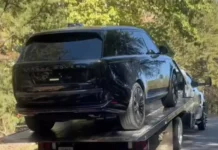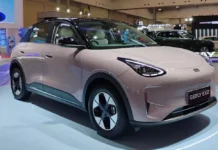Hybrid cars are becoming increasingly popular. However, not everyone knows the history of this type of car. Let’s find out what a hybrid car is? When was the first hybrid car introduced? What is the history of the development of this type of car?
>> Exploring the history of hybrid cars (1)
Period when hybrid cars disappeared
TS. Victor Wouk is known as a researcher in the electric hybrid trend. In 1975, he and his colleagues built a parallel hybrid version of the Buick Skylark. The engine used was the Mazda rotating engine combined with a conventional transmission. It was supported by a separate 15 hp DC electric motor placed in front of the transmission. 8 12V batteries were used for energy backup. The maximum speed of the car was 80 mph (129 km/h), and it could accelerate from 0 to 100 km/h in 16 seconds.
 TS. Victor Wouk with the Buick Skylark hybrid
TS. Victor Wouk with the Buick Skylark hybrid
The concept of hybrid cars continued to revive with the work of Dr. Ernest H. Wakefield in 1976, when he was working for Linear Alpha Inc. A small engine – AC generator with a rated output of 3 kW was used to charge the batteries. However, these experiments quickly stopped due to technical issues. Other approaches were researched in the 1970s and early 1980s to expand the range of hybrid cars, based on the designs of Venlovelly and Priestly in 1899. But these studies did not reach the market. Other hybrid car models were built by Electric Auto in 1982 and Briggs & Stratton in 1980, both following a parallel layout.
 Hybrid engines at this time were unable to compete with gasoline engines
Hybrid engines at this time were unable to compete with gasoline engines
Although there were two oil crises in 1973 and 1977, and environmental issues were increasingly concerned, no hybrid cars appeared on the market. Researchers were attracted to electric cars, so many electric car models were built in the 1980s. Hybrid cars lacked attractiveness during this period, possibly due to the lack of development in power electronics, modern electric motors, and battery technology. The 1980s marked the improvement in the size of internal combustion engines, the introduction of catalytic converter technology, and fuel injection technology.
Revival and popularity
The concept of hybrid cars truly became attractive in the 1990s when it became certain that electric cars would never achieve energy savings goals. Ford Motor Company launched the “Ford Hybrid Challenge” program, attracting efforts from universities to develop hybrid car prototypes for production.
Car manufacturers around the world built many hybrid engine models that achieved excellent fuel efficiency compared to previous internal combustion engine versions. In the US, Dodge built the Intrepid ESX 1, 2, and 3 models. ESX1 was a series hybrid car, powered by a small 3-cylinder turbocharged diesel engine and a battery pack, with two 100 horsepower electric motors placed on the rear wheels.
Dodge built the Intrepid ESX 1 model
The US government established the Partnership for a New Generation of Vehicles (PNGV) and set targets for midsize sedans to achieve 80 mpg. Ford Prodigy and GM Precept were the results of this effort, both being series hybrid cars, using a small size turbocharged diesel engine combined with a dry clutch and a conventional transmission. Both of them met the set targets but the production was not carried out.
European efforts were demonstrated through the French Renault Next, a small-sized series hybrid car using a 750 cc forced-induction internal combustion engine and 2 electric motors. It could achieve a maximum speed of 29.4 km/l (70 mpg) and acceleration characteristics equivalent to traditional cars. Volkswagen also introduced the Chico model, essentially an electric car, with a nickel-metal hydride battery pack and a three-phase induction motor. A small two-cylinder gasoline engine was used to recharge the batteries and provide additional power at high speeds.
The most significant effort in the development and commercialization of hybrid cars was made by Japanese manufacturers. In 1997, Toyota introduced the Prius sedan in Japan, and Honda introduced the Civic and Civic Hybrid. These cars are now being used worldwide. They can achieve excellent fuel efficiency features. Toyota Prius and Honda car models have a historical value as they were the first hybrid cars to be commercialized in the modern era to address fuel consumption issues in cars.
Thao Anh (TTTD)



































![[QUICK REVIEW] Nissan Kicks e-Power: A Unique Hybrid Experience](https://vnauto.net/wp-content/uploads/2023/11/xehay-NissanKicks-02112022-4-150x150.jpg)












